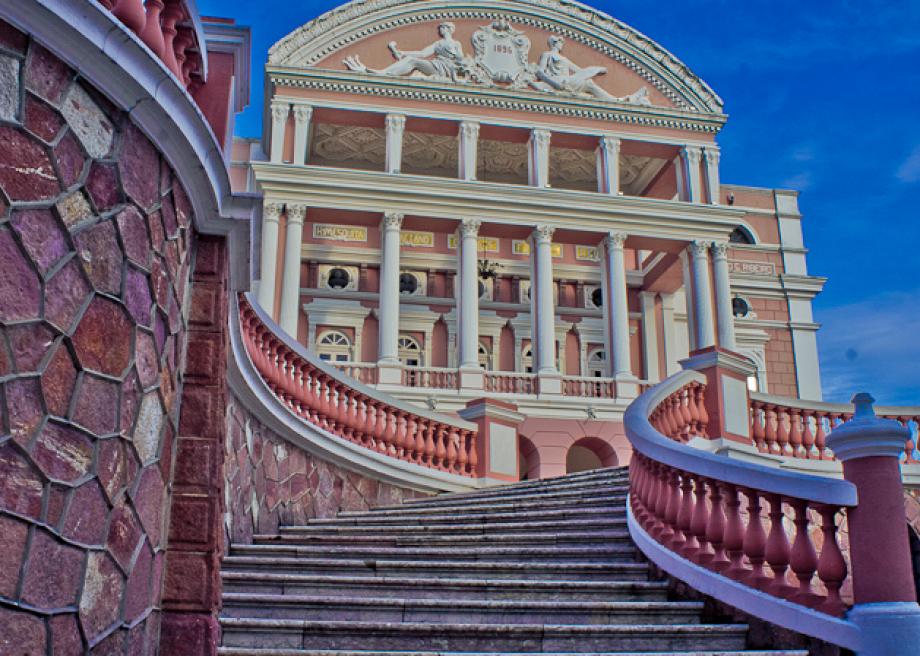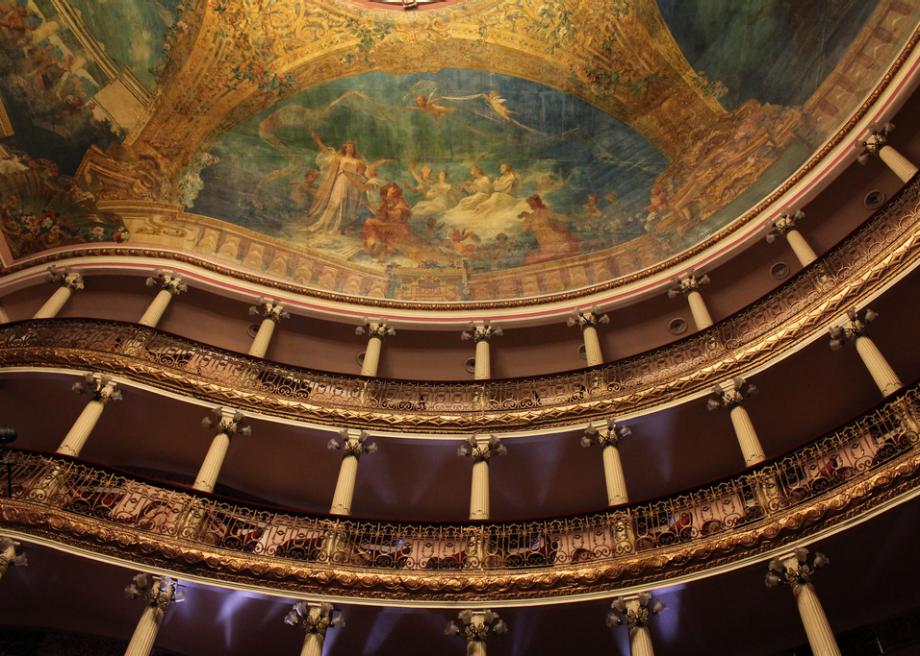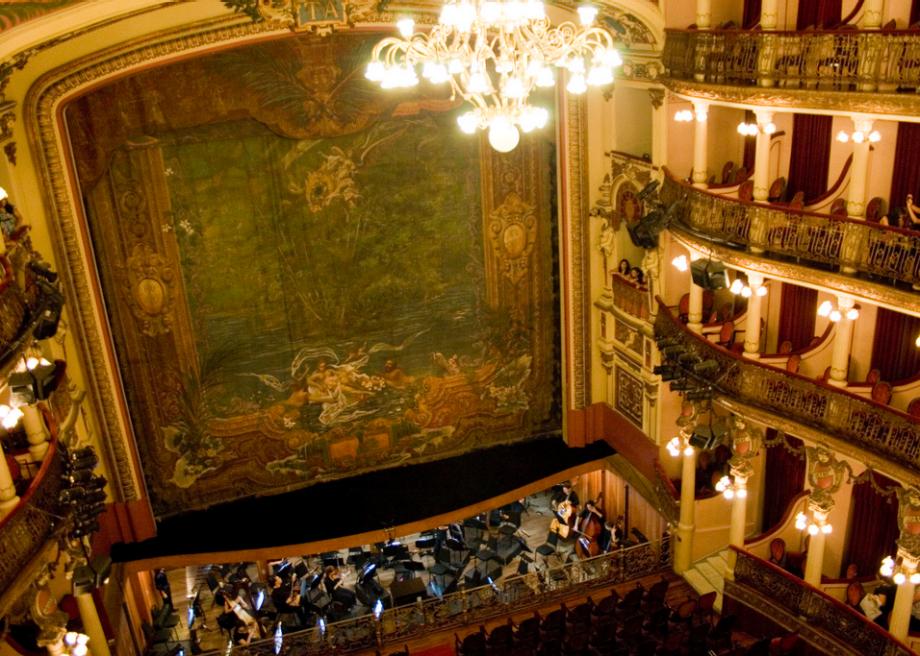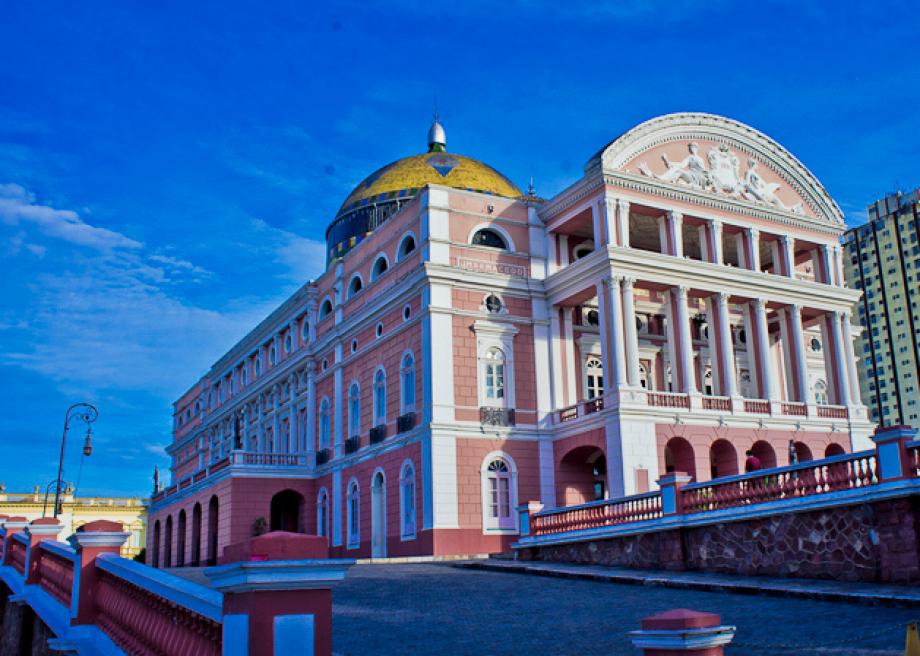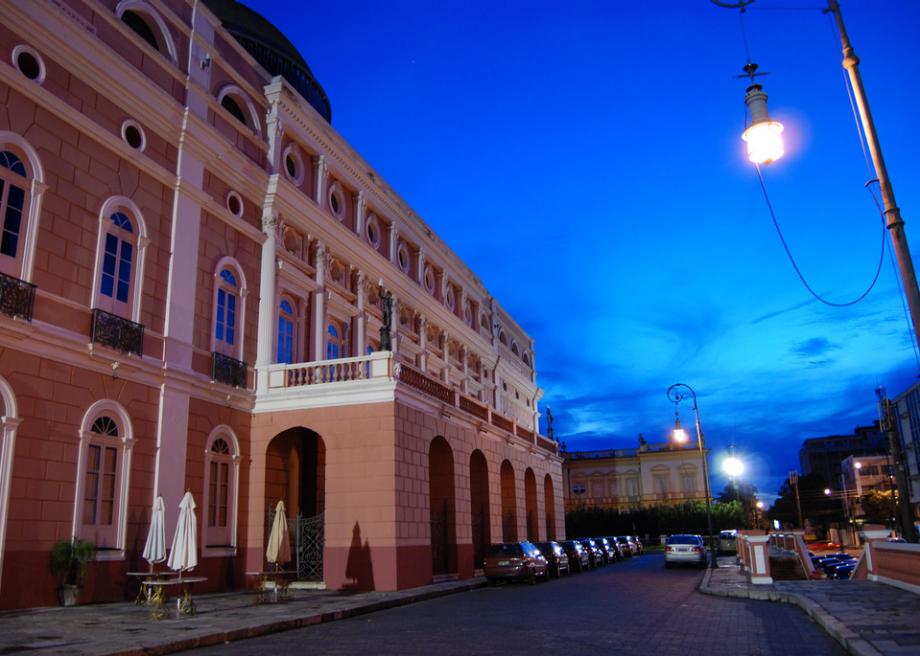Teatro Amazonas: The Dramatic Story of an Unlikely Opera House
Atlas Obscura on Slate is a blog about the world's hidden wonders. Like us on Facebook, Tumblr, or follow us on Twitter @atlasobscura.
Flush with cash due to the thriving rubber export business, Brazil's plantation barons were looking for conspicuous ways to spend their money at the end of the 19th century. Building a grand opera house in the middle of the rainforest was the obvious choice.
Construction on the neo-classical style Teatro Amazonas (Amazon Theatre) began in Manaus in 1884. Sparing no expense, the barons imported artists, designers and materials from across Europe. Roofing came from Alsace, furniture from Paris, marble from Italy, and steel from England. On the outside of the building, the dome was covered with 36,000 decorated ceramic tiles painted in the colors of the Brazilian national flag. The inside was decorated by Italian painter Domenico de Angelis.
The first performance, featuring Italian tenor Enrico Caruso, took place on January 7, 1897. Some say that entire opera house was built just to lure him to this remote corner of the world, so that the rich rubber barons of Manaus could hear him sing.
With the invention of synthetic rubber in 1909, Manaus lost its main source of income. The wealthy left town, and the opera house closed down, staying silent until director Werner Herzog used it as a shooting location for his 1982 film Fitzcarraldo. The movie tells the story of Brian Sweeney "Fitzcarraldo" Fitzgerald, a rubber baron in Peru who dreams of building an opera house in Iquitos. The only land available to him is blocked by a treacherous set of rapids, but this is no deterrant to Fitzcarraldo. His plan is to sail a steamer filled with building materials up the river, then drag it over the hillside to its intended destination. An important detail: the ship weighs 320 tons.
Production of the film was plagued with difficulties, chiefly caused by Herzog's decision to move an actual 320-ton steamship over a hill for the sake of authenticity. The role of Fitzcarraldo was originally played by Jason Robards, but he was forced to abandon the project after contracting dysentery. Replacement actor Klaus Kinski was prone to fits of violent rage, prompting a local extra to volunteer to murder him. (Herzog declined the offer because Kinski still had scenes left to film.)
Excepting its cameo in Fitzcarraldo, there wasn't a single performance in Teatro Amazonas for 90 years. However, in 2001 the new populist government of the province determined that the city needed high-quality operas, orchestras and ballets, and allocated funds to pay top wages to the best musicians from Eastern Europe. The plan worked: Teatro Amazonas is now the home of the 54-member Amazonas Philharmonic Orchestra as well as an annual film festival.
Other theatres with lively backstories:
View Praça São Sebastião in a larger map

